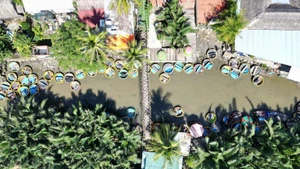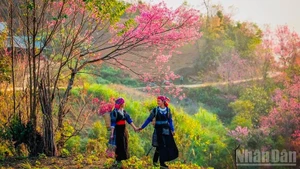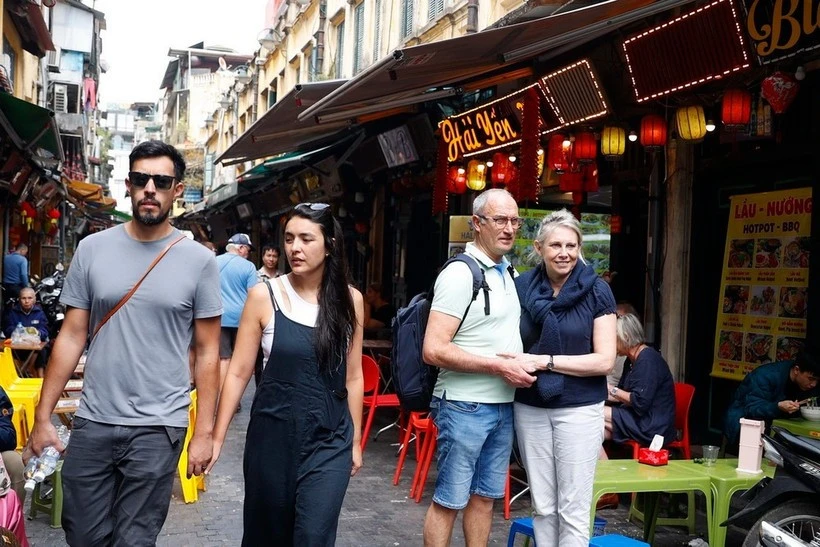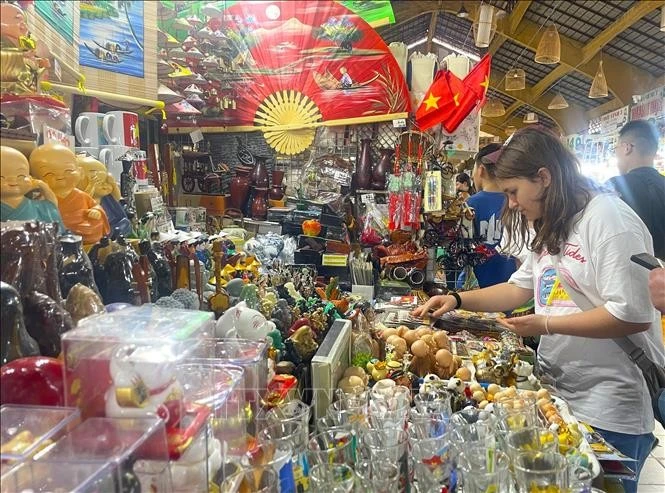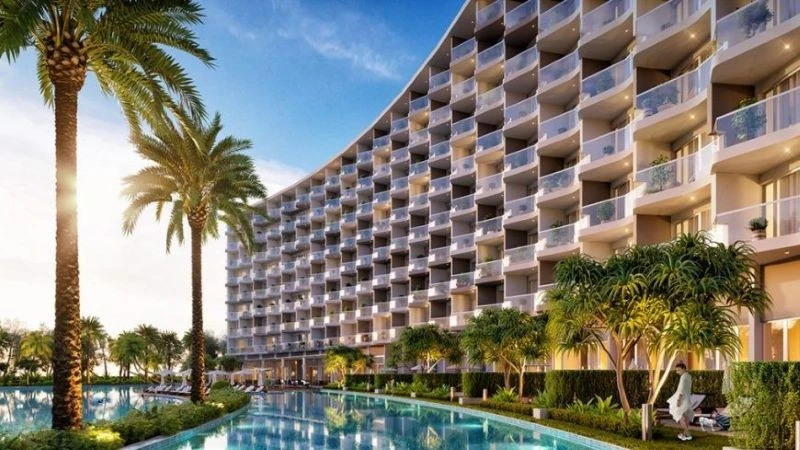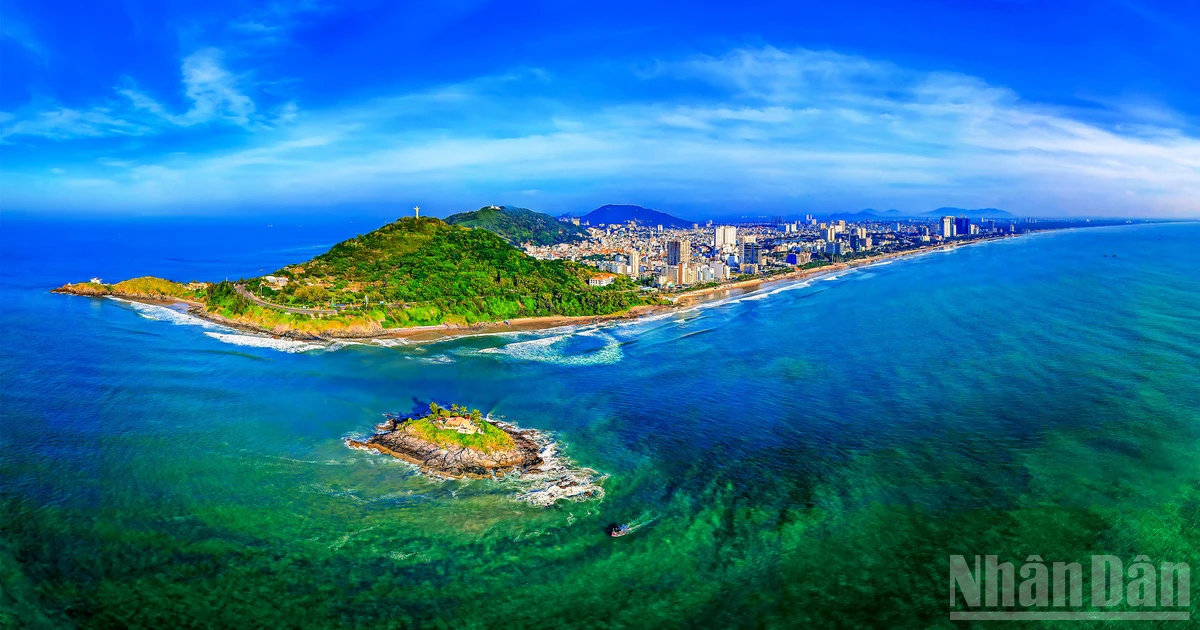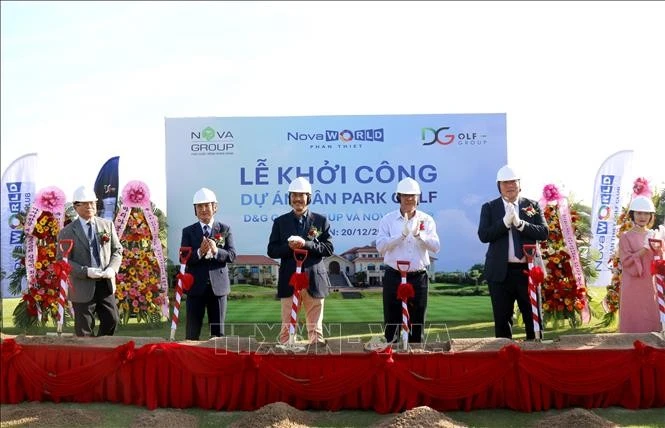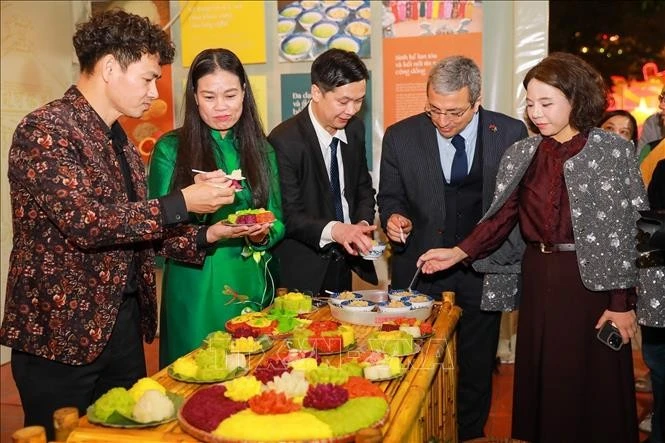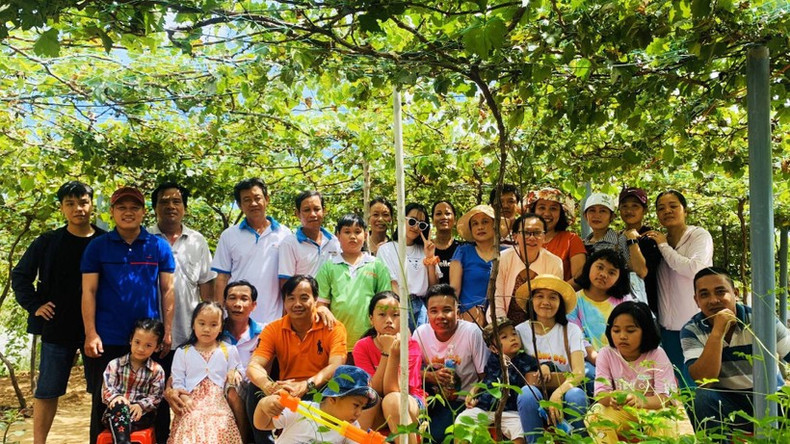
An old farmer determined to build OCOP products from grapes
Farmer Vo Van Lam, living in My Son Dong Hamlet (Phuoc My Trung Commune, Vinh Long Province), brought grape varieties from the sunny and windy central region to plant in the alluvial soil, bringing high initial economic returns. His Hoang Duy Vineyard, cultivated organically, is gradually attracting tourists to visit and enjoy grapes right in the garden.
In 2021, Lam brought six grape vines from the former Ninh Thuan Province (now Khanh Hoa) to plant experimentally. At first, lacking experience in cultivation, all the vines gradually died. Undeterred, he decided to continue planting while studying different grape varieties.
After many trials, his vines started to grow healthily and began to bear fruit. To date, he has propagated more than 400 vines on an area of 3,000 m² with varieties such as Khanh Hoa red grapes and grapes originating from the US, Japan, and China.
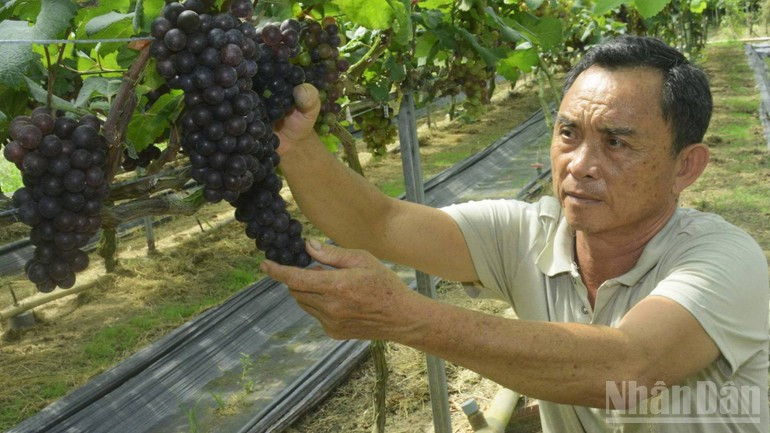
Lam said: “This land has many coconut, durian, and mangosteen trees… I thought that to attract tourists, it would be necessary to introduce new and unusual crops, so I decided to try planting grapes here. After years of growing grapes, I realised that for the vines to adapt to the climate and soil here, before planting it is necessary to build rain shelters with plastic sheets that let in light, because most grape varieties prefer dry climates and are unsuitable for areas with rain or flooding. Therefore, wide pits must be dug, with crushed stone added to improve drainage so that the vines can thrive.”
According to Lam, grape vines must be fertilised and pruned appropriately in order to flower. The ideal pruning season is from late winter to early spring. Pruning at this time helps the vines suffer less damage, heal cuts more easily and, most importantly, stimulates more fruiting.
Because the grapes are grown clean, tourists can eat them straight from the vine. On average, Lam’s family harvests about 250 kg of grapes each year, mostly sold directly to visitors at the vineyard. Recently, the family has also partnered with Mekong Lodge Resort Travel Company in Tien Giang to bring tourists to the vineyard.
At present, Lam’s vineyard has attracted many domestic and international tourists to visit and enjoy grapes right in the garden. Tourist Vo Phi Giao (from Ho Chi Minh City) shared: “I have visited many vineyards across the country, but this one has its own charm because it grows many varieties of grapes with different colours and flavours. The grapes here are grown organically, so the fruit is small but very tasty; visitors love eating them right at the vineyard.”
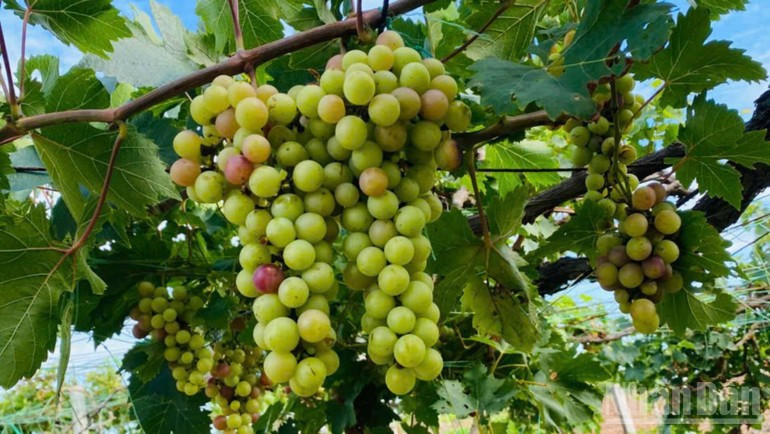
In the near future, his family plans to expand the vineyard to 5,000 m² to meet visitor demand. Lam is also researching how to process grapes into wine and handmade grape syrup for tourists to sample. At the same time, he aims to build the vineyard to meet OCOP 3-star standards to attract more tourists.
Doan Van Em, Vice Chairman of Phuoc My Trung Commune People’s Committee, commented: “Vo Van Lam is a farmer who is quick to find new directions in developing green and sustainable agricultural tourism in line with the locality’s tourism orientation. This helps increase income by selling farm produce directly to tourists at the garden.”
Two sisters bringing grapes to the coastal land
In 2019, during a trip to the former Ninh Thuan Province (now Khanh Hoa), sisters Tran Thi Diem (34) and Tran Thi Thuy (30) were given a grape vine by a friend, which they brought home to plant in their yard. After six months, the vine was thriving, so they decided to buy more, starting with 50 plants and later expanding to 300.
Tran Thi Diem said: “At first, we planted just for fun, but seeing the vines bear plenty of fruit, we came up with the idea of starting a tourism business with grapes. During the 2020 Tet holiday, when the grapes ripened, our vineyard named Bay Thiet welcomed visitors for the first time to enjoy fresh grapes in the garden, and it has developed ever since.”
Seeing the success, the family doubled the vineyard size to around 300 vines. They also developed grape jam, syrup, and wine to serve tourists on-site. In addition, as visitors wanted to buy grape seedlings, the family provided them and offered planting guidance.
Bay Thiet (Diem’s father) said: “This was the idea of my two daughters, who brought grapes to this land to grow and sell to tourists. Currently, both daughters work as pharmacists nearby, so I take care of the vineyard. Each year, the vineyard mainly welcomes visitors during Tet and summer holidays when the vines are treated to bear fruit.”
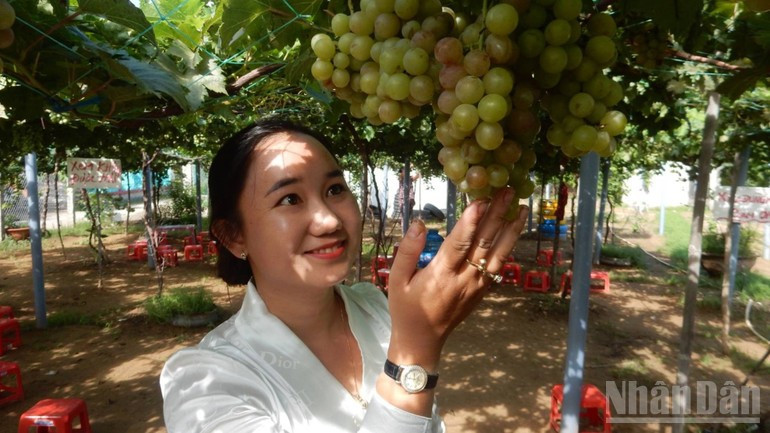
Nowadays, Bay Thiet’s daughters frequently promote the vineyard online to attract tourists. Thanks to the nearby Con Bung tourist area, many of the groups visiting for sightseeing and swimming also stop by Bay Thiet’s vineyard.
The family also grows longan, cassava and watermelon to diversify products for visitors to enjoy right in the garden, thus drawing tourists year-round.

Lam Huu Phuc, Deputy Director of Vinh Long Department of Culture, Sports and Tourism, said: “The province is strengthening the application of digital technology and green, clean technology in tourism business; developing smart tourism; promoting, branding and managing tourism resources. At the same time, we will build a smart tourism ecosystem, applying digital technology to connect, support and enhance visitor experiences. This includes encouraging investors and enterprises to engage in responsible tourism aligned with green and sustainable directions, creating green products and services to drive the trend of green tourism consumption.”
In addition, the province is diversifying tourism types towards green growth, such as eco-tourism, agro-ecotourism, community tourism, exploratory tourism, and experiences of natural and cultural heritage, leisure, and wellness.
